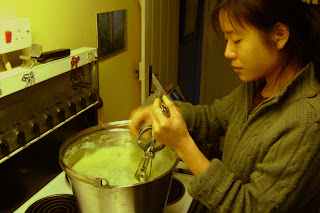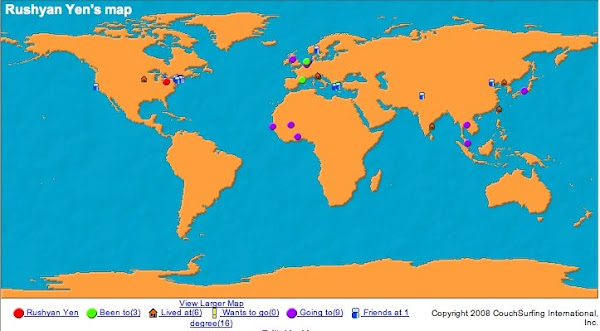Indigo, or indigotin, is a dyestuff that has been used throughout the ancient world for its ability to color fabrics a brilliant deep blue.
The chemical compound that makes this color can be extracted from several species of plants and although the Asian indigo plant is most common, it is woad (Isatis tinctoria) that grows in the temperate climate of Britain.
 With the help of her good friend Helen Wood, Robin is actually growing her own woad plants, which I got to help pick and process into indigo dye!!!
With the help of her good friend Helen Wood, Robin is actually growing her own woad plants, which I got to help pick and process into indigo dye!!! 1. The leaves are removed, washed and weighed on a scale.
1. The leaves are removed, washed and weighed on a scale. 2. Cut the leaves into medium/small size pieces.
2. Cut the leaves into medium/small size pieces. 3. Steep the leaves in a stainless steel pan full of hot water.
3. Steep the leaves in a stainless steel pan full of hot water. 4. Remove from heat and cool as quickly as possible.
4. Remove from heat and cool as quickly as possible.5. Then strain out the leaf matter.
 6. Add soda ash when temperature reaches 50°C.
6. Add soda ash when temperature reaches 50°C. 7. Aerate the vat by whisking to add oxygen and precipitate the pigment.
 If the froth on top is blue, that means you have successfully removed indigotin from the plant!!!
If the froth on top is blue, that means you have successfully removed indigotin from the plant!!! 8. Pour solution into jars and allow pigment to settle to the bottom before removing excess liquid on top. The indigo can now be used or dried for more permanant storage!
8. Pour solution into jars and allow pigment to settle to the bottom before removing excess liquid on top. The indigo can now be used or dried for more permanant storage!









No comments:
Post a Comment